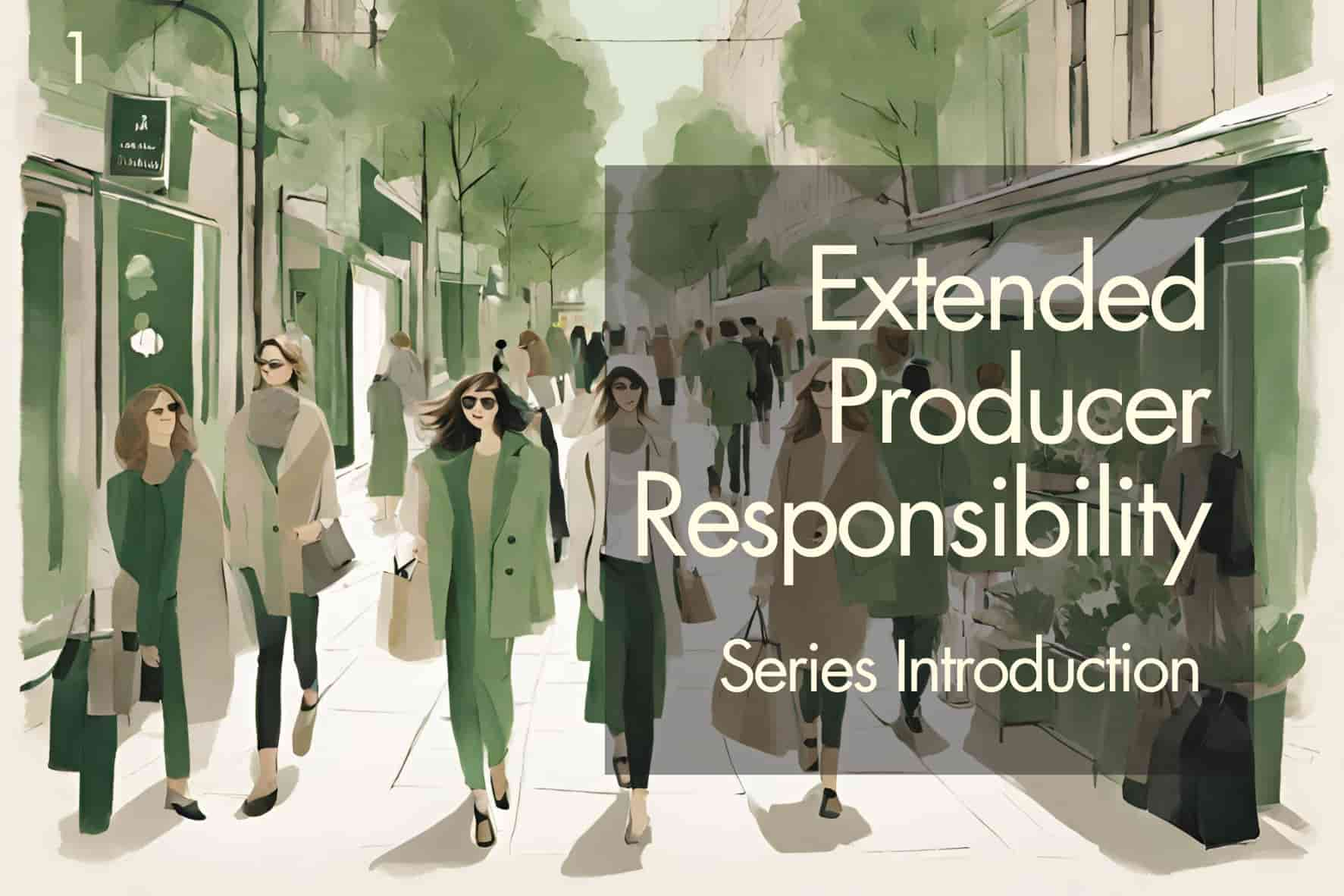On April 24, 2013, the “deadliest nondeliberate structural failure accident in modern human history” took place (Dhaka garment factory collapse, 2022). The collapse of the Rana Plaza building in Dhaka, Bangladesh remains the “deadliest garment-factory disaster in history” (Hoskins, 2013). Every year this catastrophic event reminds the world of the impacts of our fashion choices and their unintended consequences.
This detailed post examines:
What happened
On the morning of April 24, 2013, the Rana Plaza factory in Dhaka, Bangladesh collapsed (Rahman & Yadlapalli, 2021). Over 1100 garment workers were killed, and more than 2600 were maimed; many for the rest of their lives (Clean Clothes Campaign, n.d.). Conditions were so dire that some survivors amputated their own limbs to try to free themselves from the rubble.
Cracks were discovered in the 8-story building the day before (Dhaka garment factory collapse, 2022). Stores located on the lower floors were closed after the cracks were discovered, but garment workers were told to ignore these warning signs. Workers were told if they didn’t return to work the next day, they wouldn’t be paid for a month (Dhaka garment factory collapse, 2022).
The next morning, the building experienced a brief power outage, and diesel generators on the roof kicked in (Rahman & Yadlapalli, 2021). In less than 90 seconds the building collapsed (Goodwin, 2021). One survivor recalls that “the managers forced us to return to work, and just one hour after we entered the factory the building collapsed with a huge noise” (Campbell, 2013).
Victims of this horrific incident were not limited to the garment workers themselves, the majority of which are women, but also their children, who were in “nursery facilities within the building” (Dhaka garment factory collapse, 2022).
Root causes
Construction issues
Examining the construction of the Rana Plaza building reveals that proper protocols were not followed from the beginning (Marriott, 2013).
1) Structural stability was compromised
Constructed in mostly swampland, the building’s foundation was weak. Over 60% of the building was built on the site of a filled-in pond (Goodwin, 2021).
2) Inadequate supervision
It was reported that the construction of the building was not supervised by architects or engineers, which is usually required (Marriott, 2013).
3) Permits not followed
The Rana Plaza factory was only permitted to build 5 floors. Floors 5 through 8 were later added without proper supports (Goodwin, 2021). The already stressed building was in the process of having a 9th floor added at the time of its collapse (Marriott, 2013).
4) Sub-standard materials
Vibrations from the generators that kicked in during the power outage contributed to the stress and fractures present in the walls (BBC News, 2013). These failures were a result of the inferior materials used including steel rods (BBC News, 2013).
5) Zoning
The Rana Plaza building was zoned for commercial use (Tipu, 2017). It was not intended to bear the weight of industrial manufacturing.
After visiting Bangladesh, Elizabeth L. Cline, the author of Overdressed and The Conscious Closet, had this insight:
“One thing that’s very unusual about the garment industry in Bangladesh — you have factories in tall office buildings that were not built for manufacturing. You have factories in very obviously shoddily constructed buildings. I think for me, it was clear. You could just see it: These were buildings that were not built to code.” (Nittle, 2018)
Social issues
Most garment workers returning to Rana Plaza on the day of its collapse did not want to be there. They were already concerned for their safety, having witnessed the spreading cracks and fractures in the building walls. Clear social and ethical issues caused these workers to return.
1) Power imbalance at the factory level
As of 2020, garment workers in Bangladesh still don’t earn a living wage (Lu, 2020). On average, garment workers make about 66% of the salary necessary to maintain a decent quality of life (Lu, 2020).
Many garment workers at Rana Plaza were reported to have been owed several weeks of back pay prior to the building’s collapse (Marriott, 2013). If they didn’t return to work despite the unsafe conditions, they risked not receiving their back pay or future pay (Marriott, 2013). They simply couldn’t afford to not go to work.
2) Power imbalance at the brand level
Typically, when western-based fashion brands negotiate with offshore factories they try to obtain the cheapest price possible. Asian and African factories are highly aware of the looming threat that brand owners can turn to another factory willing to meet their price. This often results in factories placing pressure on workers and looking for ways to cut corners (Goodwin, 2021).
One of the saddest facts about this catastrophic event is that experts believe it was “entirely preventable” (Goodwin, 2021).
Actions and Reactions
A flurry of activity happened after the horrific incident of April 2013.
Recovery
Bangladesh’s locals launched an immediate rescue effort to find victims buried in the rubble. Efforts were hampered by a fire that broke out later that day in the factory remains. The United Nations’ International Search and Rescue Advisory Group (INSARAG) offered assistance but was rejected by the Bangladesh government (Dhaka garment factory collapse, 2022). Locals assisting with search and rescue operations weren’t given the proper equipment, which resulted in many searching in sandals (Dhaka garment factory collapse, 2022).
Global outrage
In the weeks following the disaster, there was wide news coverage of the horrific disaster. For many, this was the first time confronting the realities of what overseas fashion production looks like. Non-Governmental Organizations (NGOs) worked to identify brands that produced out of the collapsed factory location (Rahman & Yadlapalli, 2021). In total, 29 global brands were identified as having recent or current orders from the building including:
“Benetton (Italy), Bonmarche (UK), Cato Fashions (USA), The Children’s Place (USA), El Corte Ingles (Spain), Joe Fresh (Loblaws, Canada), Kik (Germany), Mango (Spain), Matalan (UK), Primark (UK/Ireland) and Texman (Denmark)” (Clean Clothes Campaign, n.d.)
Investigations into cause
Outrage by locals and the world at large spurred Bangladesh to investigate the root cause and file charges against the factory owner. An ongoing investigation has resulted in the owner, Sohel Rana, and 37 others including government officials being charged with murder and building code violations (Dhaka garment factory collapse, 2022). As of this writing, the trials for both charges are still pending against Rana. Many of the other accused are either “on bail, on the run, or already dead” (Dhaka garment factory collapse, 2022).
Financial assistance
Families of those impacted sought financial assistance, as many of the victims of the incident were their families’ sole providers. Families sought assistance but were met with red tape in many instances. Some were asked to provide DNA evidence to prove that their relative was a victim, which was not easy (Dhaka garment factory collapse, 2022).
Union activity
Following the incident, about 230 unions were formed through the end of 2014 in Bangladesh (Nittle, 2018). The following year it was reported that the government made an effort to stop unions from forming (Nittle, 2018). As a result of union activity, wages have slowly increased but remain below the suggested living wage for the country.
Accords created and signed
A consortium of NGOs collaborated to create the “Accord on Fire and Building Safety” in May 2013. NGOs included: Clean Clothes Campaign, Workers Rights Consortium, International Labour Rights Forum, the Maquila Solidarity Network, the GIZ Agency, and IndustriALL Global Union. The Accord was a legally binging 5-year agreement designed to create enforceable standards around fire and safety. “The Accord helps Ready-Made Garment factories in Bangladesh become safe – and stay safe – for millions of workers” (Accord on Fire and Building Safety in Bangladesh, 2018). The Accord was renewed in 2018 as the “Transition Key Accord”, which maintains similar standards as the original Accord (The Accord, 2022). The Clean Clothes Campaign also sought compensation for victims through the Rana Plaza Arrangement which was formed in September 2013 six months later. This arrangement sought to compensate families affected by the tragedy (Clean Clothes Campaign, n.d.).Fashion Revolution
Fashion Revolution, an NGO, was formed as a direct result of the Rana Plaza tragedy in April 2013. Every year they celebrate “Fashion Revolution Week” during the last week of April to honor the victims of the senseless tragedy with the hashtag “#WhoMadeMyClothes”. In 2020, they recently started a campaign called “WhatsInMyClothes” to address the chemical composition of fabrics used in apparel creation (Fashion Revolution, 2022).Have we learned?
It’s been 9 years since the collapse of the Rana Plaza building. The burning question is could this happen again today?
Garment worker safety
As of 2022, there still appear to be reports of electrical and fire-related issues at garment factories. These incidences have resulted in worker injuries and death.
- Electrical issues led to the explosion of a garment factory in November 2020 in Gujrat, India, where 12 people died (Chan, 2021).
- An explosion led to a garment factory collapsing in March 2021 in Cairo, Egypt where 8 people died and 29 were injured (Chan, 2021).
- A fire broke out in a garment factory in March 2021, in Cairo, Egypt killing 20 people and injuring dozens (Chan, 2021).
- A fire started in the chemical warehouse of a garment factory in March 2021 in Gazipur, Bangladesh resulting in one death and 42 injuries (Chan, 2021).
- There was another report of a garment factory fire in March 2022 in Chittagong, Bangladesh. There were no casualties (Dhaka Tribune, 2022).
The latest remediation report from the Accord published in July 2021 offers the following statistics in regards to factory operations in Bangladesh (Accord on Fire and Building Safety in Bangladesh, 2021):
- “1,243 factories yet to have their Fire Alarm and Detection System verified as installed to standard
- 1,055 factories yet to have their Fire Suppression System verified as fully functional and installed to standard
- 917 factories yet to have all safe egress measures implemented and verified to standard
- 375 factories yet to complete structural remediation based on an Engineering Assessment”
According to International Labor Organization, at least 109 accidents have taken place in Bangladesh between April 2013 and January 2018 (Goodwin, 2021).
Power dynamics
There are continuing accounts of harassment and abuse in fashion supply chains. In 2019, the Workers Rights Consortium (WRC) reported repeated incidences of “rape, sexual assault and harassment at multiple garment factories in Maseru” (Kelly, 2020). They also published a report linking major fashion brands to sexual harassment and assault in factories in South Africa, India, Brazil, Mexico, Sri Lanka, Turkey, China, Bangladesh, and Vietnam (Kelly, 2020). That same year, ActionAid also reported that “80% of all Bangladeshi garment workers had faced sexual violence in the workplace” (Kelly, 2020).
An especially troubling aspect of these reports is that workers attempting to report incidences of harassment or abuse will often face retaliation. This is usually in the form of demotions or being fired. In January 2021, this came to a head for 20-year-old Jeyasre Kathiravel, as she was raped and killed by her garment worker supervisor after months of harassment (Kelly, 2022).
Harassment and abuse in the fashion supply chain is a very significant issue that we’ve only touched on. We intend to fully dive into ethics in fashion in more detail.
Equitable pay
Garment worker wages in Bangladesh have not significantly improved and currently remain below the suggested living wage. Overtime has become the norm stemming from pressure from fashion brands to produce more (Nittle, 2018). A report by the director of the Center of Global Workers’ Rights at Penn State claims that the time workers had to produce garments fell by 8.1 from 2011 to 2015 (Nittle, 2018). Elizabeth L. Cline remarks that “while fashion chains continue to get wealthier, people at the very bottom are not getting their fair share. In some instances, real wages in the garment industry have actually gone down” (Nittle, 2018).
The covid-19 pandemic hit the fashion industry hard. Reduced demand resulted in canceled orders worth billions of dollars across Africa and Asia (Brown & Latela, 2022). In Lesotho, more than 50,000 garment workers lost their jobs since the pandemic started (Brown & Latela, 2022). In Bangladesh, more than 357,000 garment workers lost their jobs (Rahman & Yadlapalli, 2021). Many others were forced to accept lower wages.
The already low wages garment workers earn doesn’t make it easy to save. Workers are often living from pay-cheque to pay-cheque and are forced to accept sub-par working conditions (Chan, 2021). This means when faced with a global pandemic and job loss, this can result in detrimental circumstances for individuals and families. In Bangladesh when the country was forced into a lockdown due to rising covid-19 cases, garment workers were exempted.
Dr. Sanchita Banerjee Saxena, editor of Labor, Global Supply Chains, and the Garment Industry in South Asia: Bangladesh After Rana Plaza says it becomes “a question of, ‘Do I not feed my family or do I take a risk and catch Covid-19? I have to feed the family.’” (Chan, 2021).
Overall, there still remains a disconnect “between profits, accountability and responsibility” (Rahman & Yadlapalli, 2021).
What still needs to happen
To avoid another catastrophe similar to the Rana Plaza collapse, key changes need to happen from the brand to the consumer level.
Brand accountability
There is still a major disconnect between brand responsibility and profits. Following the Rana Plaza collapse, many brands denied producing at the factory (Nittle, 2018). Elizabeth L. Cline proposed that these brands didn’t know they were lying. She believes that this was a moment of reconning for many brands, as they realized where their products were being made (Nittle, 2018).
Fashion brands need to take a greater interest in factory operations and worker conditions. An expose in The Conversation reveals that “Factory operators told us they wanted buyers to insist on better conditions for workers, and to pay enough to ensure that could happen. They welcomed contracts that [stipulate] spending money on safer buildings and higher pay.” (Rahman & Yadlapalli, 2021).
There needs to be more responsibility placed on retailers and brands. There should be no surprises when issues are discovered at factories. Brands need to know who is working either directly or indirectly with them in the production of their garments.
Consumer change
The Clean Clothes Campaign broke down the theoretical distribution of profits associated with the production of a t-shirt (Rahman & Yadlapalli, 2021):
- Retailer: 59%
- Brand profit: 12%
- Factory profit: 4%
- Intermediary: 4%
- Material, transport, and factory overhead costs: 20.4%
- Worker: 0.6%
That means if a t-shirt costs $10, then a worker stands to make $0.60.
By purchasing only on the basis of the cheapest price, consumers become complicit in the creation of an environment that results in factories cutting corners and people being subjected to inhumane conditions. The Clean Clothes Campaign says that “every shopper choosing clothes on the basis of cheapest price was complicit” in the Rana Plaza collapse (Rahman & Yadlapalli, 2021).
Consumers can put more pressure on brands to do the right thing. You can do this by reaching out to brands you like and inquiring more about their supply chain partners and their stance on worker rights. You can also support brands that are certified and verifiably doing the right things.
Push for certifications
There need to be clear protocols and legally binding codes of conduct for all factories. These need to be verified through comprehensive audits to ensure that all members of the supply chain abide by these standards. Certification bodies can also be valuable in educating consumers on what things to look out for when shopping for new or used fashions (Nittle, 2018). We encourage you to support brands that sport stringent certification logos such as Global Measure’s.
To ensure we don’t experience another catastrophe like the Rana Plaza collapse, collective action needs to take place on multiple fronts. Consumers can make a big difference by shopping smartly and supporting brands doing the right thing. We need to remember that every dollar we spend either creates a new cycle of misfortune for those without a voice, or empowers women and children to live with dignity.

Deborah King
Deborah is a sustainable fashion expert located in Toronto, Canada. She’s an Industrial Engineer with a post-grad in Sustainable Fashion Production. She grew up on the tiny island of Tortola in the British Virgin Islands, and has been sewing her own clothing since the age of 10. She founded Global Measure to help authentically sustainable and ethical fashion businesses stand out from the greenwashing noise through third-party certification.
References:
Accord on Fire and Building Safety in Bangladesh (2018). Safe Workplaces. Retrieved on Apr 5, 2022 from https://bangladeshaccord.org/
Accord on Fire and Building Safety in Bangladesh (July 4, 2021). Safety Remediation Progress. Retrieved on Apr 5, 2022 from https://bangladeshaccord.org/updates/2021/04/07/safety-remediation-progress
BBC News. (May 3, 2013). Power generators linked to Dhaka building collapse. Retrieved on Apr 5, 2022 from https://www.bbc.com/news/world-asia-22404461
BDNews24 (Jan 28, 2022). Garment factory fire brought under control in Narayanganj. Retrieved on Apr 5, 2022 from https://bdnews24.com/bangladesh/2022/01/28/fire-breaks-out-at-a-garment-factory-in-narayanganj
Brown, R. L. & Latela, M. (Mar 29, 2022). Women of Lesotho’s garment industry lose jobs, hope in COVID. Retrieved on Apr 5, 2022 from https://www.thestar.com/life/health_wellness/2022/03/29/women-of-lesothos-garment-industry-lose-jobs-hope-in-covid.html
Campbell, C. (Apr 26, 2013). Dying for Some New Clothes: Bangladesh’s Rana Plaza Tragedy. Retrieved on Apr 5, 2022 from https://world.time.com/2013/04/26/dying-for-some-new-clothes-the-tragedy-of-rana-plaza/
Chan, E. (Apr 19, 2021). It Has Been 8 Years Since The Rana Plaza Disaster. What’s Changed? Retrieved on Apr 5, 2022 from https://www.vogue.co.uk/news/article/rana-plaza-disaster-8-years
Clean Clothes Campaign (Mar 6, 2019). Garment factory fire confirms Bangladeshi inspection agencies are not yet up to their task. Retrieved on Apr 5, 2022 from https://archive.cleanclothes.org/news/2019/03/06/garment-factory-fire-confirms-bangladeshi-inspection-agencies-are-not-yet-up-to-their-task
Clean Clothes Campaign (n.d.). Rana Plaza. Retrieved on Apr 5, 2022 from https://cleanclothes.org/campaigns/past/rana-plaza
Dhaka garment factory collapse (Mar 25, 2022). In Wikipedia. Retrieved on Apr 5, 2022 from https://en.wikipedia.org/wiki/2013_Dhaka_garment_factory_collapse
Dhaka Tribune (Mar 4, 2022). Chittagong garment factory fire doused. Retrieved on Apr 5, 2022 from https://www.dhakatribune.com/nation/2022/03/04/chittagong-garment-factory-fire-doused
Fashion Revolution (Mar 26, 2022). In Wikipedia. Retrieved on Apr 5, 2022 from https://en.wikipedia.org/wiki/Fashion_Revolution
Goodwin, J. (Apr 20, 2021). The Rana Plaza Collapse: What Happened & What it Means for the Fashion Industry. Retrieved on Apr 5, 2022 from https://growensemble.com/rana-plaza/
Greensefa (Apr 22, 2015). Rana Plaza Commemoration. Retrieved on Apr 15, 2022 from https://www.flickr.com/photos/greensefa/17242635451/
Greensefa (Apr 22, 2015). Rana Plaza Commemoration. Retrieved on Apr 15, 2022 from https://www.flickr.com/photos/greensefa/17055641890/
Hoskins, T. E. (Sept 16, 2013). Op-Ed | Preventing Another Rana Plaza. Retrieved on Apr 5, 2022 from https://www.businessoffashion.com/opinions/news-analysis/op-ed-preventing-another-rana-plaza/
Kelly, A. (Aug 20, 2020). Fashion’s dirty secret: how sexual assault took hold in jeans factories. Retrieved on Apr 5, 2022 from https://www.theguardian.com/news/2020/aug/20/fashion-industry-jeans-lesotho-garment-factory-workers-sexual-violence
Kelly A. (Apr 1, 2022). H&M pledges to end shopfloor sexual violence in India after worker killed. Retrieved on Apr 5, 2022 from https://www.theguardian.com/global-development/2022/apr/01/hm-pledges-to-end-shopfloor-sexual-violence-in-india-after-worker-killed-jeyasre-kathiravel
Lu, S. (Dec 6, 2020). FASH455 Global Apparel & Textile Trade and Sourcing. Retrieved on Apr 5, 2022 from https://shenglufashion.com/2020/12/04/minimum-wage-level-for-garment-workers-in-the-world-updated-in-december-2020/
Marriott, R. (Apr 26, 2013). The house of cards: the Savar building collapse. Retrieved on Apr 5, 2022 from https://libcom.org/article/house-cards-savar-building-collapse
Nahian, J. A. (May 13, 2013). Dhaka Savar Building Collapse. Retrieved on Apr 15, 2022 from shorturl.at/hoKS4
Nittle, N. (Apr 13, 2018). What the Rana Plaza Disaster Changed About Worker Safety. Retrieved on Apr 5, 2022 from https://www.racked.com/2018/4/13/17230770/rana-plaza-collapse-anniversary-garment-workers-safety
Omotosso, M. (Dec 5, 2018). “Who Made My Clothes” Movement – How it All Began. Retrieved on Apr 5, 2022 from https://fashioninsiders.co/features/inspiration/who-made-my-clothes-movement/
Patton E. (Mar 1, 2020). After Factory Disaster, Bangladesh Made Big Safety Strides. Are the Bad Days Coming Back? Retrieved on Apr 5, 2022 from https://www.nytimes.com/2020/03/01/world/asia/rana-plaza-bangladesh-garment-industry.html
Posner, M. (Apr 22, 2020). Seven Years Later, What The Rana Plaza Factory Collapse Teaches Us About COVID-19. Retrieved on Apr 5, 2022 from https://www.forbes.com/sites/michaelposner/2020/04/22/seven-years-later-what-the-rana-plaza-factory-collapse-teaches-us-about-covid-19/?sh=27657947488a
Rahman, S. & Yadlapalli, A. (Apr 22, 2021). Years after the Rana Plaza tragedy, Bangladesh’s garment workers are still bottom of the pile. Retrieved on Apr 5, 2022 from https://theconversation.com/years-after-the-rana-plaza-tragedy-bangladeshs-garment-workers-are-still-bottom-of-the-pile-159224
Rahman, S. & Yadlapalli (Apr 26, 2021). Remember Bangladesh garment factory collapse? Compliance is still a charade 8 yrs later. Retrieved on Apr 5, 2022 from https://theprint.in/opinion/remember-bangladesh-garment-factory-collapse-compliance-is-still-a-charade-8-yrs-later/646204/
The New Arab (Feb 12, 2022). Three Syrians among dad in Turkey textile factory fire. Retrieved on Apr 5, 2022 from https://english.alaraby.co.uk/news/three-syrians-among-dead-turkey-textile-factory-fire
The Accord (Mar 13, 2022). In Wikipedia. Retrieved on Apr 5, 2022 from https://en.wikipedia.org/wiki/Accord_on_Fire_and_Building_Safety_in_Bangladesh
Tipu, S. I. (Apr 19, 2017). Rana Plaza collapse: Order on charge framing against Sohel Rana, others May 8. Retrieved on Apr 5, 2022 from https://archive.dhakatribune.com/bangladesh/court/2017/04/19/rana-plaza-charge-framing-may-8
Weronika (Apr 24, 2013). Bangladesh-Building. Retrieved on Apr 15, 2022 from shorturl.at/cepBJ




